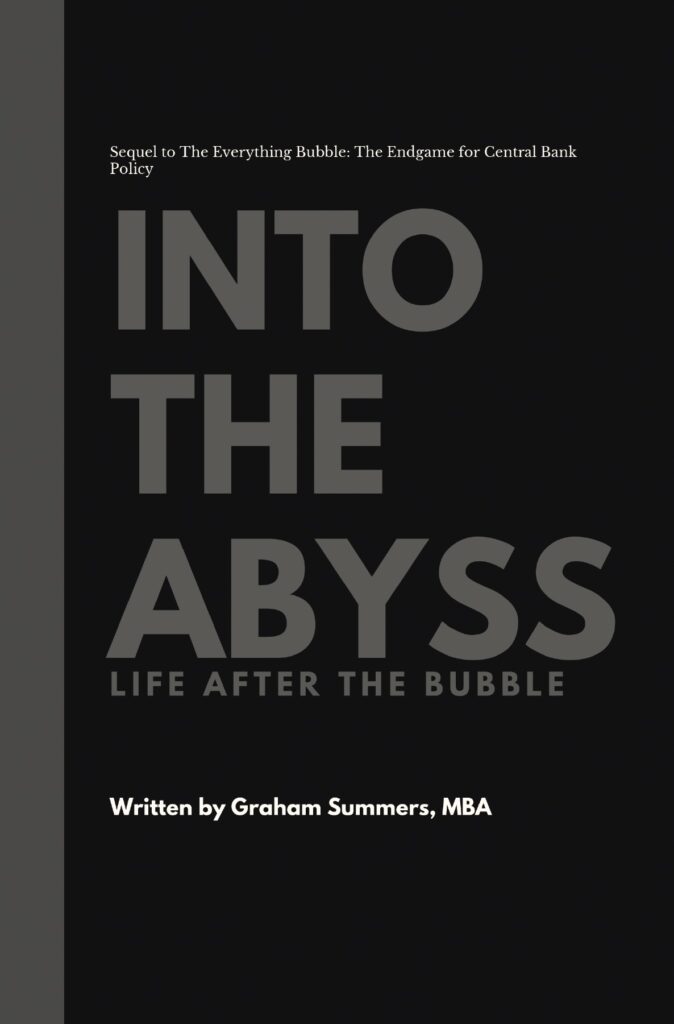THE ONLY REPORT INVESTORS NEED TO KNOW WHEN TO GET OUT OF STOCKS
LISTEN TO OUR PODCAST.
GRAHAM'S NEW BOOK WAS THE #1 NEW RELEASE IN FOUR CATEGORIES ON AMAZON
HOT TOPICS.
- 2008
- bail-ins
- bear market
- Bernanke
- big banks
- bond bubble
- bonds
- BOVESPA
- Carry Tax
- cash ban
- central banks
- China
- collapse
- contraction
- crash
- crisis
- debt
- debt crisis
- debt implosion
- deflation
- Derivatives
- economic collapse
- Federal Reserve
- inflation
- interest rates
- investing
- Jp MOrgan
- meltdown
- NIRP
- Operation Twist
- PboC
- Private wealth
- QE
- recession
- S&P 500
- slowdown
- stock market crash
- stocks
- TBTFs
- the Fed
- the market
- US Dollar
- War on cash
- Yellen
- ZIRP
Tag Archives: bonds
Fed Experts Call for NIRP… is a Physical Cash Ban Next?
More and more “experts” are calling for Negative Interest Rate Policy or NIRP. The US Federal Reserve is obsessed with market reactions to its policies. Because of this, anytime the Fed plans to announce a major change in policy, it … Continue reading
Posted in It's a Bull Market
Tagged bonds, crisis, debt crisis, Federal Reserve, the Fed, War on cash
Comments Off on Fed Experts Call for NIRP… is a Physical Cash Ban Next?
It’s Official: Central Banks Are Losing Control
For six years, the world has operated based on faith and hope that Central Banks somehow fixed the issues that caused the 2008 Crisis. All of the arguments supporting this defied common sense. A 5th grader knows that you cannot … Continue reading
Posted in It's a Bull Market
Tagged BoJ, bond bubble, bonds, debt crisis, debt implosion, ECB, interest rates, PboC, the Fed
Comments Off on It’s Official: Central Banks Are Losing Control
Why What’s About to Begin Will Dwarf 2008
Earlier this week I outlined how the next Crash will play out. Today we’ll assess why this Crisis will be worse than the 2008 Crisis. By way of explanation, let’s consider how the current monetary system works… The current global … Continue reading
Posted in It's a Bull Market
Tagged 2008, bonds, crisis, debt crisis, emerging market meltdown, implosion, interest rates, the Fed, US Dollar
Comments Off on Why What’s About to Begin Will Dwarf 2008
Is the Treasury Preparing For a Systemic Event?
Behind the veneer of “all is well” being promoted by both world Governments and the Mainstream Media, the political elite have begun implementing legislation that will permit them to freeze accounts and use your savings to prop up insolvent banks. … Continue reading
Posted in It's a Bull Market
Tagged bail-ins, bonds, Cyprus bank, debt crisis, the Fed, Treasury
Comments Off on Is the Treasury Preparing For a Systemic Event?




